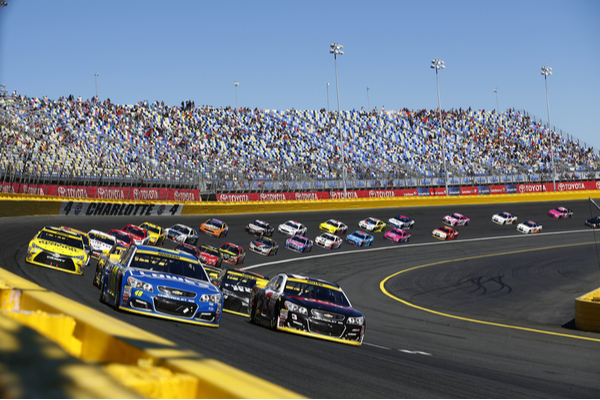Tens of thousands of people gather almost every weekend to watch their favorite NASCAR driver try to race their way to victory lane, but weather can play a major role in the outcome of a race. As AccuWeather reports, nearly every aspect of the weather can affect NASCAR races, but the biggest weather factor by far is rain.
“Unless we’re on a road course, we can’t race in the rain because our tires are slick tires; it’s essentially like driving on the road with four bald tires in the rain, you just slide,” Matt Tifft told AccuWeather in a 2019 interview. Tifft is a professional stock car driver from Hinckley, Ohio, who raced for Front Row Motorsports during the 2019 NASCAR season.
If rain begins to fall during the middle of a race, it will be put on hold until the precipitation ends and the track is able to be dried. A passing shower may just lead to a short break in the race, but persistent, heavy rain could cause the race to be suspended for hours, or even until the following day.
In 2014, the Daytona 500 was interrupted by weather with a rain delay that lasted for six hours and 22 minutes, the longest rain delay in Daytona 500 history. During the delay, fans had to be evacuated from the grandstands when the National Weather Service issued a tornado warning for the track.
Once the rain ends and it appears as though there will be a long stretch of dry weather, NASCAR will begin to dry that track with Air Titans. Drying the track’s surface to the point where it is safe to race again takes much longer on bigger tracks, like the 2.5-mile-long Daytona International Speedway, when compared to smaller tracks, such as the half-mile-long Bristol Motor Speedway.
“When we do have rain delays, it makes it harder because you’re getting into a rhythm of what you do on race day. [When the] rain comes down and there’s a delay to the initial start of the race, it’s kind of aggravating, but you just need to be patient,” Tifft told AccuWeather.
The timing of the rain is also crucial to the race itself and the strategies that teams use to try to be the leader when the checkered flag flies. NASCAR Cup Series races are broken up into three stages and can officially be called if disruptive weather moves in after the second stage has been completed. “You’ll see teams sometimes try to make a strategy play and roll the dice, because if it rains when they think it’s going to rain, there’s a good chance that they could win,” Tifft said.
However, if the rain arrives later than the teams anticipate, their strategies may not work and they may end up finishing the race poorly. “We’re always pulling up a couple different radars to make sure we have the most accurate picture of what’s going on,“ Tifft said. He added that engineers and manufacturers will monitor different weather models leading up to a race so they know what to expect throughout the course of the race.
Even if it doesn’t rain during the race itself, heavy downpours beforehand can have a big impact on how the cars perform and handle for the drivers. During the events leading up to the big race, such as practices and qualifying, rubber from the tires gradually builds up on the tack surface, changing the way that the tires grip to the track.
“When that rain picks up [and washes away] all the rubber, it makes that surface more abrasive and rough on tires because it’s laying down fresh rubber, rather than rubber on rubber. So we can wear through tires a whole lot more quickly,” Tifft said. “We’ll have situations where after practice and qualifying, you’ve set up your car for the track a certain way, and the rains will come and wash away all that rubber,” Tifft added.
This adds an extra challenge for teams that they need to take into account when planning their strategies for a race. The amount of sun or clouds throughout the course of a race also plays an important role in how the cars will perform for the drivers. “If we have a 60-degree, overcast day, not only do we see an increase in horsepower and speeds the cars are traveling, but the grip level goes up by quite a bit because the tires are really reaching their maximum threshold,” Tifft said.
The opposite happens on hot and sunny days, which can be common during summer races such as the Brickyard 400 at Indianapolis Motor Speedway. “Your car can feel about perfect when it’s 60 F and overcast, but when it’s 95 F and slick and slippery, your car might not be that great,” Tifft said.
The races during the summer months also lead to extreme heat inside the cars that the drivers need to cope with for hours on end. Temperatures may climb above 130 F inside a car on a hot, sunny afternoon.
The weather forecast is also important for the thousands of fans who view the race from the exposed grandstands every weekend. Folks headed to the track to watch their favorite drivers compete should be sure that they are prepared to be out in the elements for several hours. This includes bringing a poncho and sunscreen as well as drinking plenty of water to stay hydrated.
—
Grindstone Media Group / Shutterstock.com
